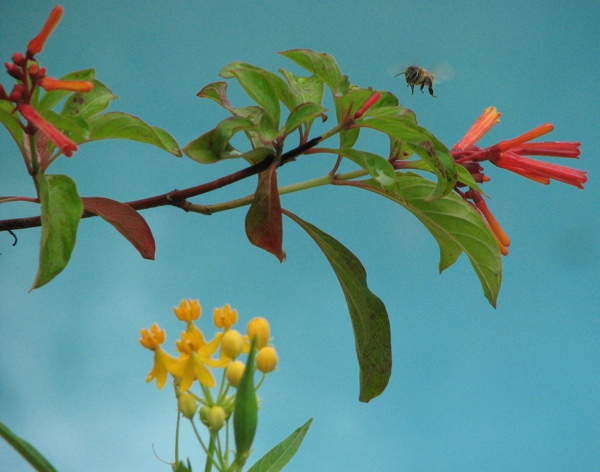
The summer yields butterflies:
Early mornings among the Hamelia patens, or commonly called firebush, are the time especially of the moths. Soon followed by the bees, and then the zebra long-wing butterflies. Soon the occasional sulfur and swallowtails, but always the monarchs come to the these burst of red-orange flowers.
The garden reeks of jasmine day and night. There three varieties persist, three huge bushes of Hamelia patens [ shown above ], numerous Stachytarpheta jamaicensis, countless salvia coccinea, a short fence-length Lonicera sempervirens, fulminous amounts of Jessamine, numerous "buttercups," clumps upon clusters and rows of society garlic. And forever creeping the Biscayne oxeye [Wedelia * ], Cape weed, and the Mexican purple Tradescantia have wandered in from the other parts of continents far away.
The bumble bees hover about the blue porter weed [stachytarpheta], milkweeds, and the gaillardia attract the bees. The Lonicera are a prize for attracting hummingbirds. Rain lilies and African lilies coexist in tandem beds but expressing exquisitely different blooms.
All of the blossoms attract the eye, yet I especially like the morning glories because they recall the dawn for me–announcing a day like no other–since they so quickly pass away. I suspect like each of us, the blooming is brief. Beheld only by a few we together, all pass quickly into oblivion, without a trace. Do butterflies recall their caterpillar lives?
Lonicera sempervirens a place that I have found hummingbirds and wasps besides the bees. See IFAS.
Gaillardia in springtime.
![]()
Always save your worms.
Be ever vigilant against rooting out and digging-up Paederia foetida the notorious skunk vine.
Collect seeds and disperse them.
Have a rain barrel so long as it is legal in your state.
Improve the soil.
Keep lady bugs.
Look for snakes, they relish rodents for dinner.
The tropical, or blood sage is a virtually indestructible native.
![]()

Monarch butterfly, The Florida variety are residents breeding all year round.
![]()
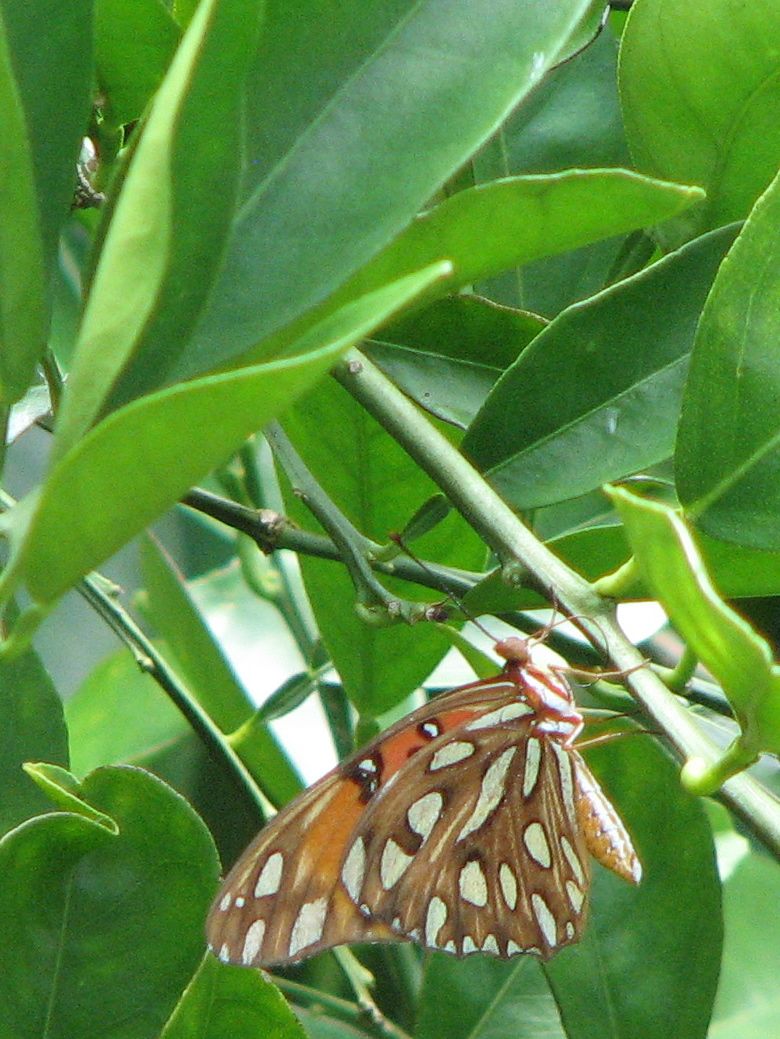
Gulf Fritillary
![]()
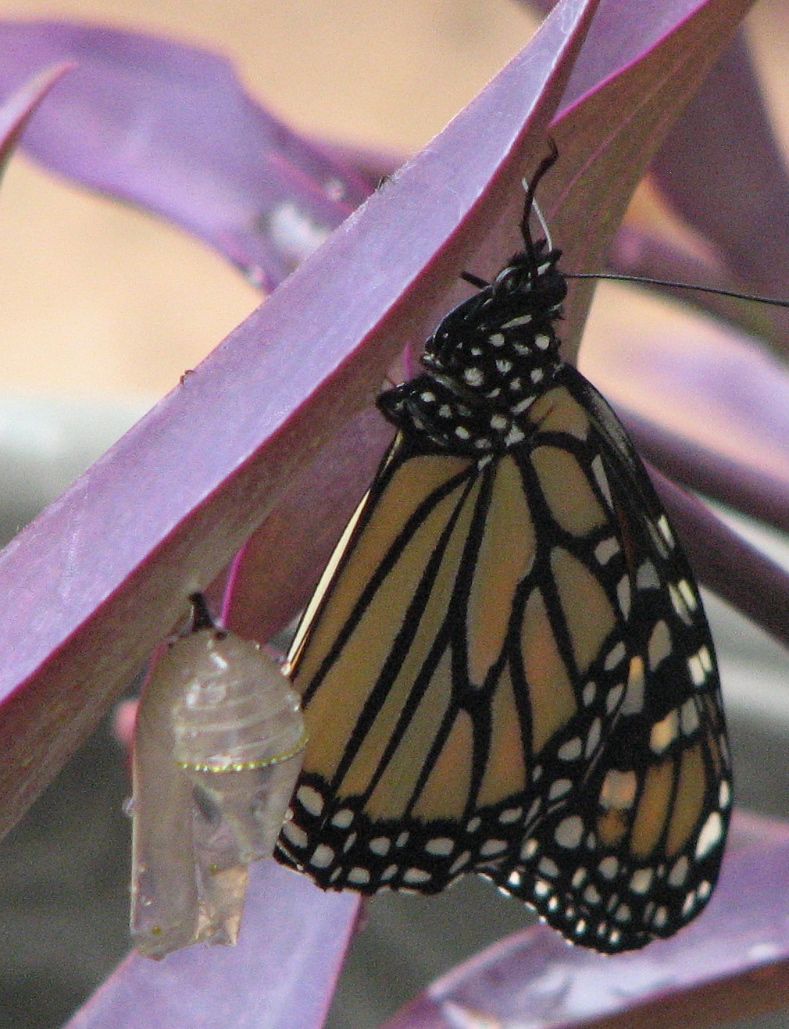
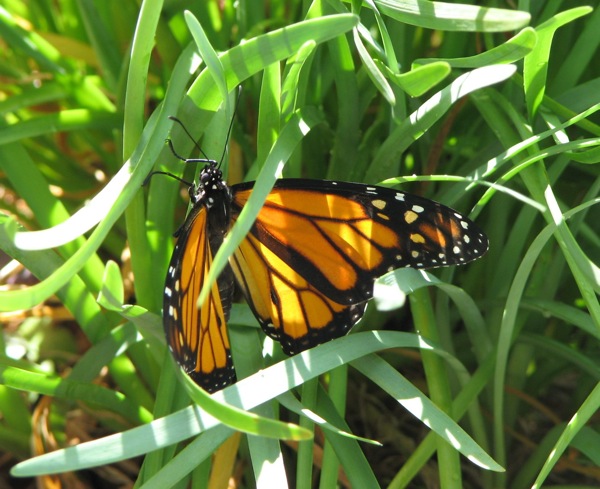
Monarch emerging among rain lilies and a monarch caterpillar on asclepias leaf. "All milkweeds (asclepias) contain toxins, called cardenolides, which the monarch has adapted to be able to ingest. These toxins serve to protect both the plants and the monarchs from predators." IFAS.
![]()
Sulphur butterfly
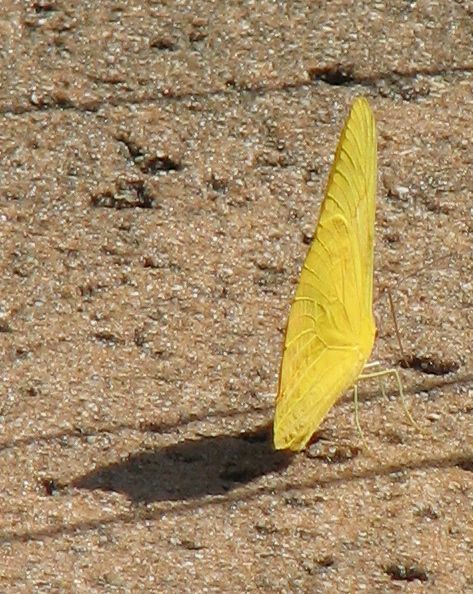
![]()
They are found throughout North America, from Canada all the way to Mexico.
The Tiger Swallowtail butterfly (Papilio glaucas) is a strong flier with distinctive yellow and black striped markings on its wings and body.
Zebra long-wing butterfly.
![]()
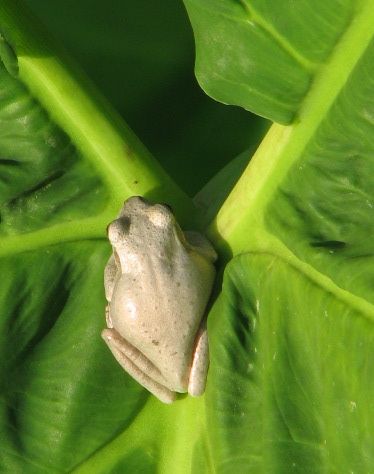 Ageratum
AgeratumAGERATUM HOUSTONIANUM Miller, Gard. Dict., ed. 8. 1768.
BLUEMINK
ASCLEPIAS CURASSAVICA Linnaeus, Sp. Pl. 215. 1753.
SCARLET MILKWEED; BLOODFLOWER. [introduced sp.]
see: photograph, & IFAS warning about toxicity levels.
"There are 21 native milkweed species in Florida and eight native species in south Florida (see sidebar). While some of these species may not be quite as showy as A. curassavica, they work perfectly well as monarch attractants. Gardeners should rest assured that monarchs are well adapted to consuming these native species. For example, while butterflyweed (A. tuberosa) has tougher leaves than scarlet milkweed (and in fact monarchs need to eat more of this plant than other species to get the nutrients they need), caterpillars that eat only A. tuberosa grow just as well as those that eat other species including A. curassavica. IFAS
CALLICARPA AMERICANA Linnaeus, Sp. Pl. 111. 1753.
AMERICAN BEAUTYBERRY
ECHINACEA PURPUREA (Linnaeus) Moench, Methodus 591. 1794.
EASTERN PURPLE CONEFLOWER
Basionym: Rudbeckia purpurea Linnaeus 1753.
GAILLARDIA PULCHELLA Fougeroux de Bondaroy, Mem. Acad. Sci. (Paris) 1786: 5. 1788.
FIREWHEEL
Jessamine
GELSEMIUM SEMPERVIRENS (Linnaeus) W. T. Aiton, Hortus Kew. 1: 64. 1811.
Bignonia sempervirens Linnaeus 1753.
YELLOW JESSAMINE; CAROLINA JESSAMINE; EVENING TRUMPETFLOWER
HAMELIA PATENS Jacquin, Enum. Syst. Pl. 16. 1760.
FIRE BUSH
Identification slide show
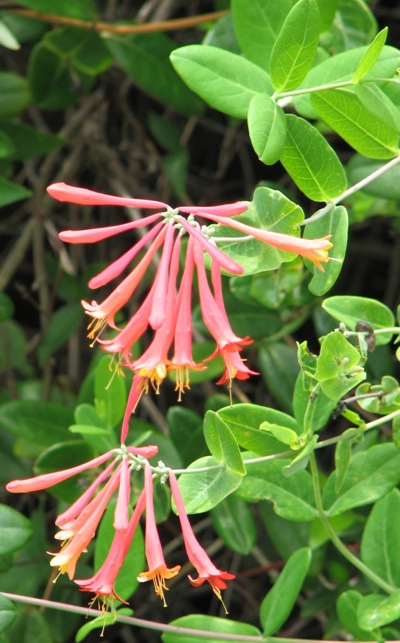 Lonicera sempervirens
Lonicera sempervirens
LONICERA SEMPERVIRENS Linnaeus, Sp. Pl. 173. 1753.
CORAL HONEYSUCKLE; TRUMPET HONEYSUCKLE
[Shown on the left]
Psychotria nervosa
PSYCHOTRIA NERVOSA Swartz, Prodr. 43. 1788.
Wild Coffee, wild
Ruellia
CAROLINA WILD PETUNIA
| RUELLIA CAROLINIENSIS (J. F. Gmelin) Steudel, Nomencl. Bot., ed. 2. 2: 481. 1841. | |
| Basionym: Pattersonia caroliniensis J. F. Gmelin 1792. | |
blue trumpet flowers
SALVIA COCCINEA Buc'hoz ex Etlinger, Comm. Salvia 23. 1777.
TROPICAL SAGE; BLOOD SAGE
Identification slide show
Wedelia is not the acceptable name for "creeping oxeye" or Biscayne oxeye an introduced or transplanted tropical flower and vine that prospers in almost as many varieties of conditions as pennywort thrives! They withstand the lack of water and literally grow before your eyes overtaking the drought and salt tolerant Helianthus debilis, or beach sunflower–if there is water available. The earliest specimen appears in an Herbarium collection dated 1960 from Sebring, Florida of the fifty or so collected since then. It is common in the West Indies.
SPHAGNETICOLA TRILOBATA (Linnaeus) Pruski, in Acevedo-Rodriguez, Mem. New York Bot. Gard. 78: 114. 1996.
Basionym: Silphium trilobatum Linnaeus 1759.
CREEPING OXEYE
The nativist approach to plants is to deride this creeper as but a weed and, worse, an invasive, exotic:
From Madagascar to the United Arab Emirates and Australia to Hawaii on into the West Indies, this one creeps wherever we seem to take it; by either intent or accident.
When viewed from the perspective of watering a lawn and feeding the grass all the time, this nativism seems short sighted, as the Sphagneticola trilobata persists with no water or fertilizer and worms are often found among its tangle roots and stems. So this comes down to saving scarce water or protecting uncompetitive native plants, life is never filled with easy choices.
Global Biodiversity Information Facility.
Stachytarpheta jamaicensis [Shown at right] 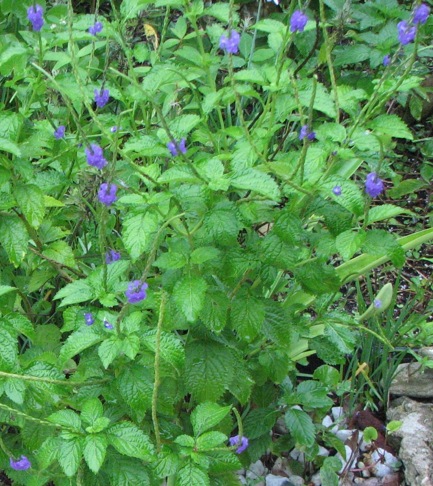
STACHYTARPHETA JAMAICENSIS (Linnaeus) Vahl, Enum. Pl. 1: 206. 1804.
Basionym: Verbena jamaicensis Linnaeus 1753.
BLUE PORTERWEED
Morning buttercups TURNERA ULMIFOLIA Linnaeus, Sp. Pl. 271. 1753. YELLOW ALDER; RAMGOAT DASHALONG
Slides Herbarium specimens.
ZEPHYRANTHES ATAMASCA (Linnaeus) Herbert, var. TREATIAE (S. Watson) Meerow, Herbertia 41: 94. 1985.
Basionym: Zephyranthes treatiae S. Watson 1879.
Amaryllis atamasca Linnaeus 1753.
TREAT'S ZEPHYRLILY; TREAT'S RAINLILY,
As you can tell by reading above, most of these species were initially described in the 18th century when slaves tended the gardens and white dudes collected and classified what these enslaved gardeners raised. There are exceptions, of course, as these two specimens were described much later.
While the above plants comprise only a partial list, we must not ignore the twin species that look quite different of Tradescantia.
TRADESCANTIA PALLIDA (Rose) D. R. Hunt, Kew Bull. 30: 452. 1975. The Purple Queen is native of Tamaulipas, Mexico.
TRADESCANTIA OHIENSIS Rafinesque, Precis Decouv. Somiol. 45. 1814. The Bluejacket has in some instances white flowers and is native but originally named the Ohio Spiderwort is a springtime oasis for bees.
Wondering what to plant in your yard?
Steph's garden seems to have a great idea for those who pick plants by the way they bloom and then see these places below for seeds:
Cestrum nocturnum L. - NIGHTFLOWERING JESSAMINE (Pakistan)
Trachelospermum jasminoides (Lindl.)Lem. - CONFEDERATE JASMINE
Jasminum multiflorum (Burm.f.)Andrews - STAR JASMINE (India)
Photographs by J. V. Siry, Seminole County.
What do I think? Well take a look at this "Population" article.
√ meaning, Basionym, in the scientific taxonomy of organisms, means the 'original name'.
Florida Trees Sources: Fairchild Tropical (Botanical) Gardens
Kew – Royal Botanical Gardens at Kew
